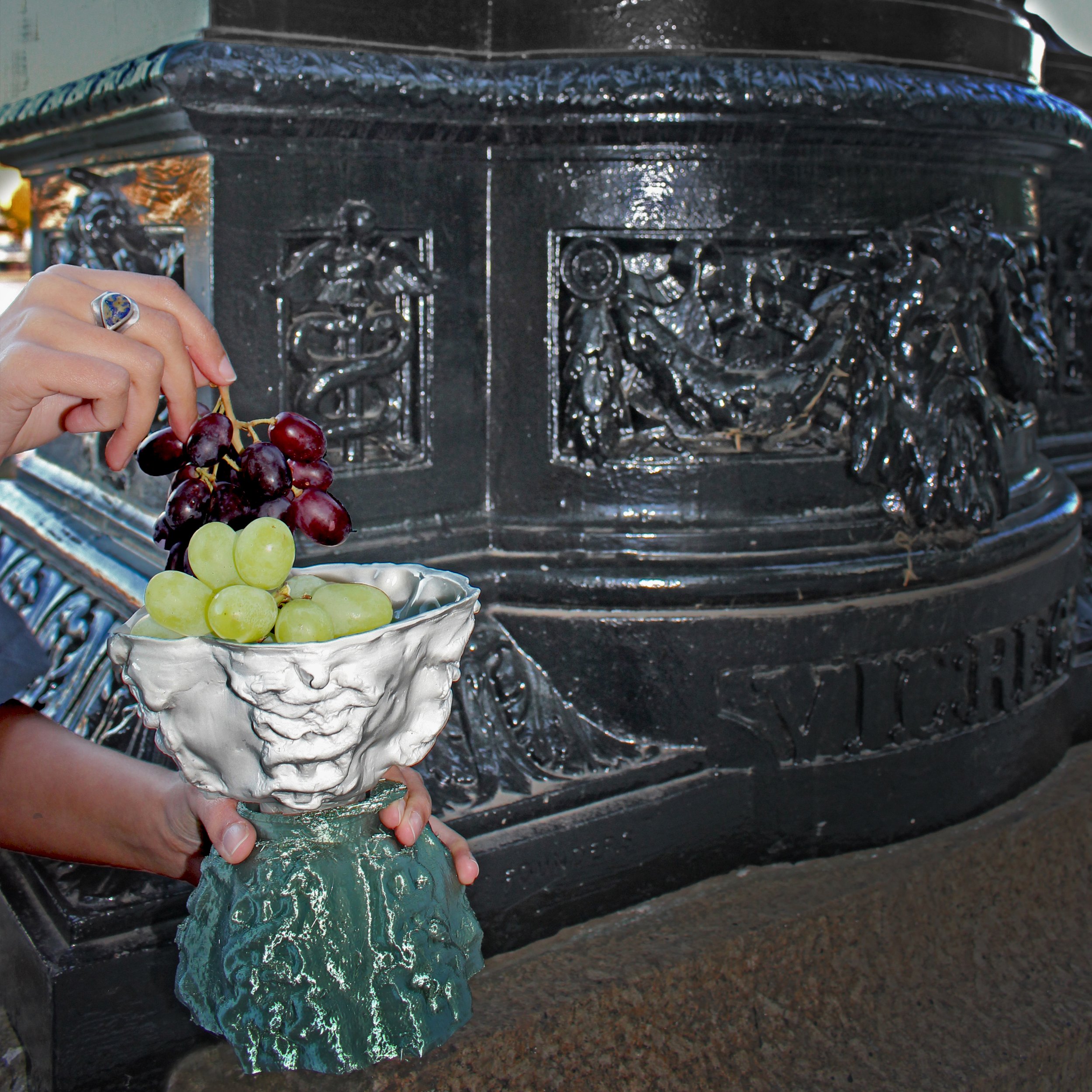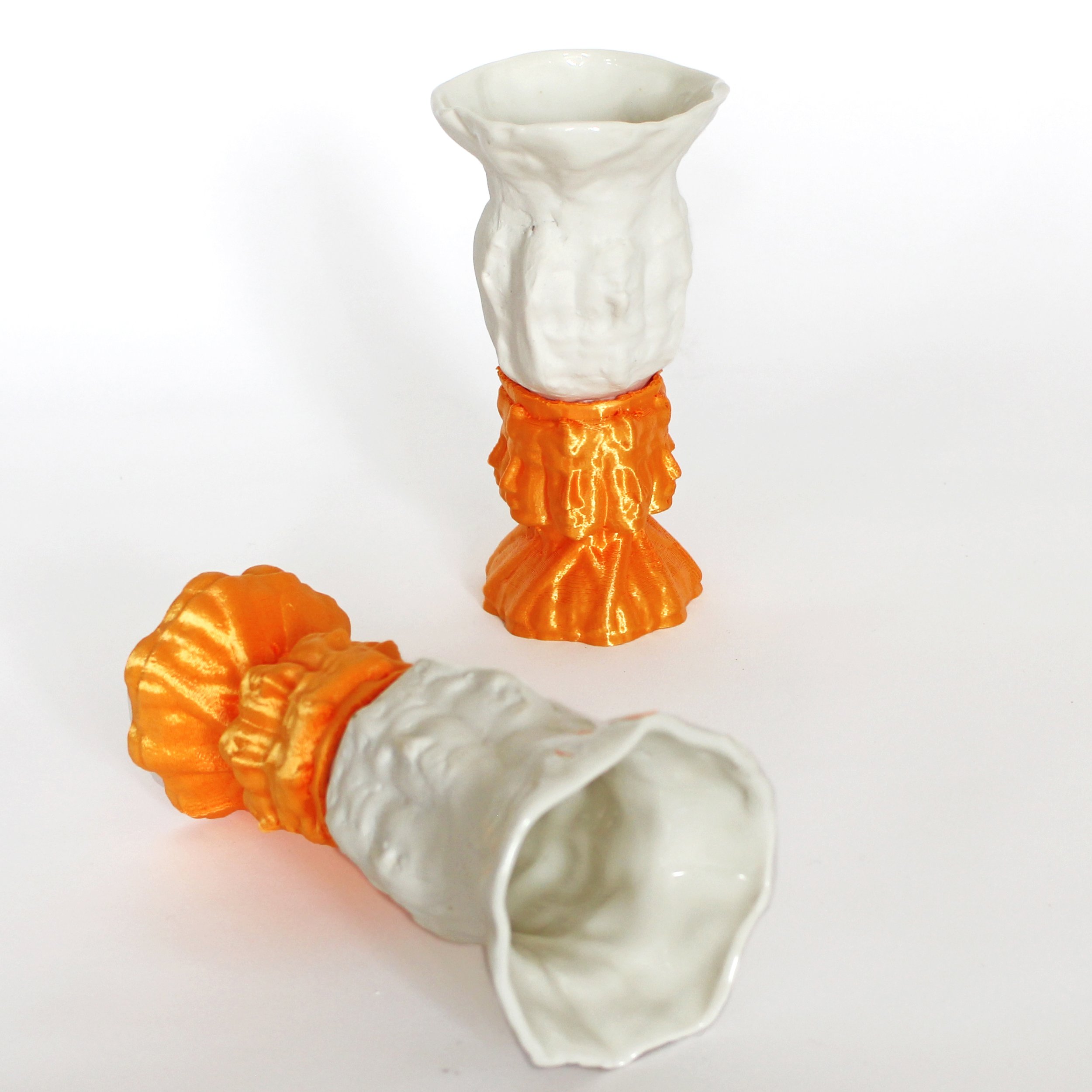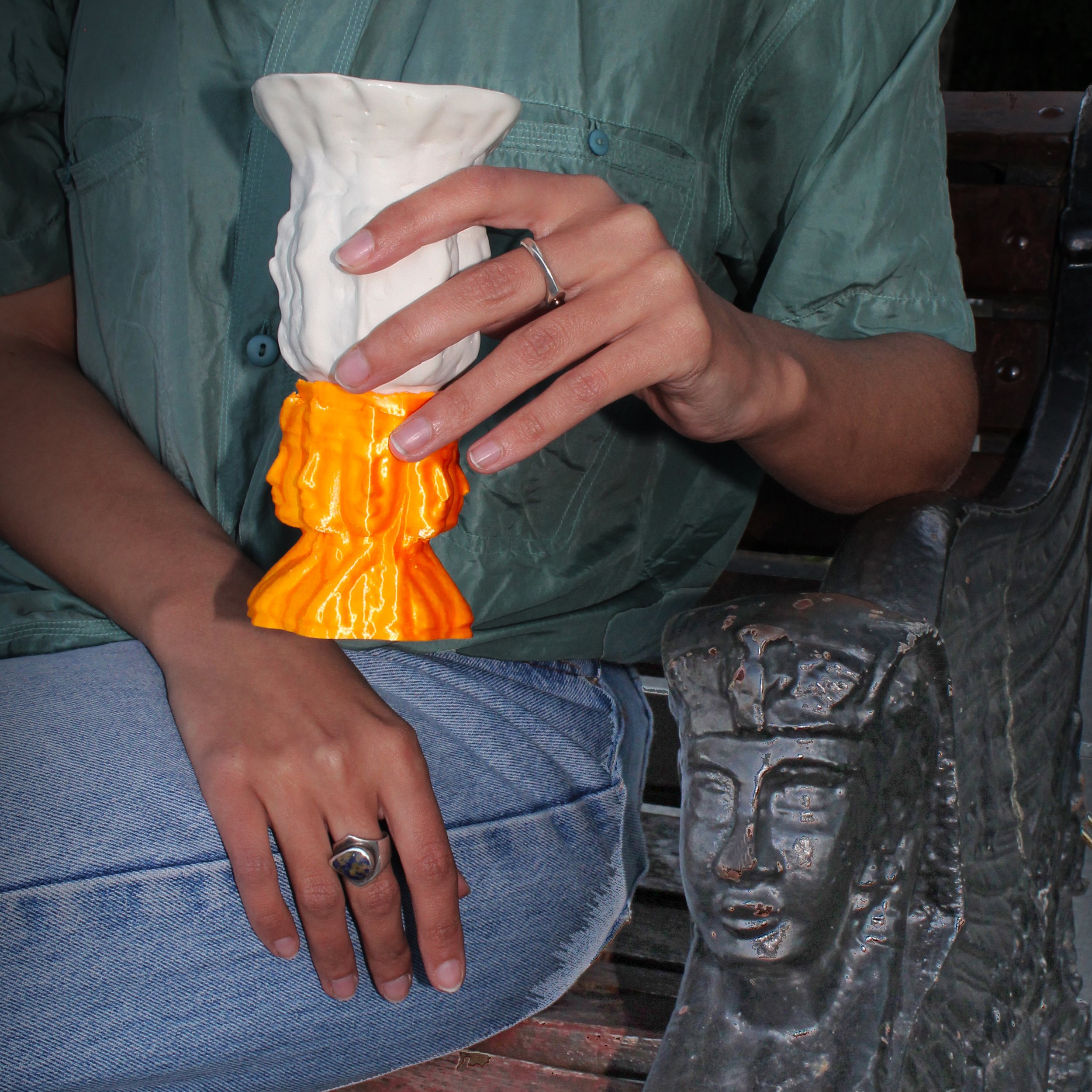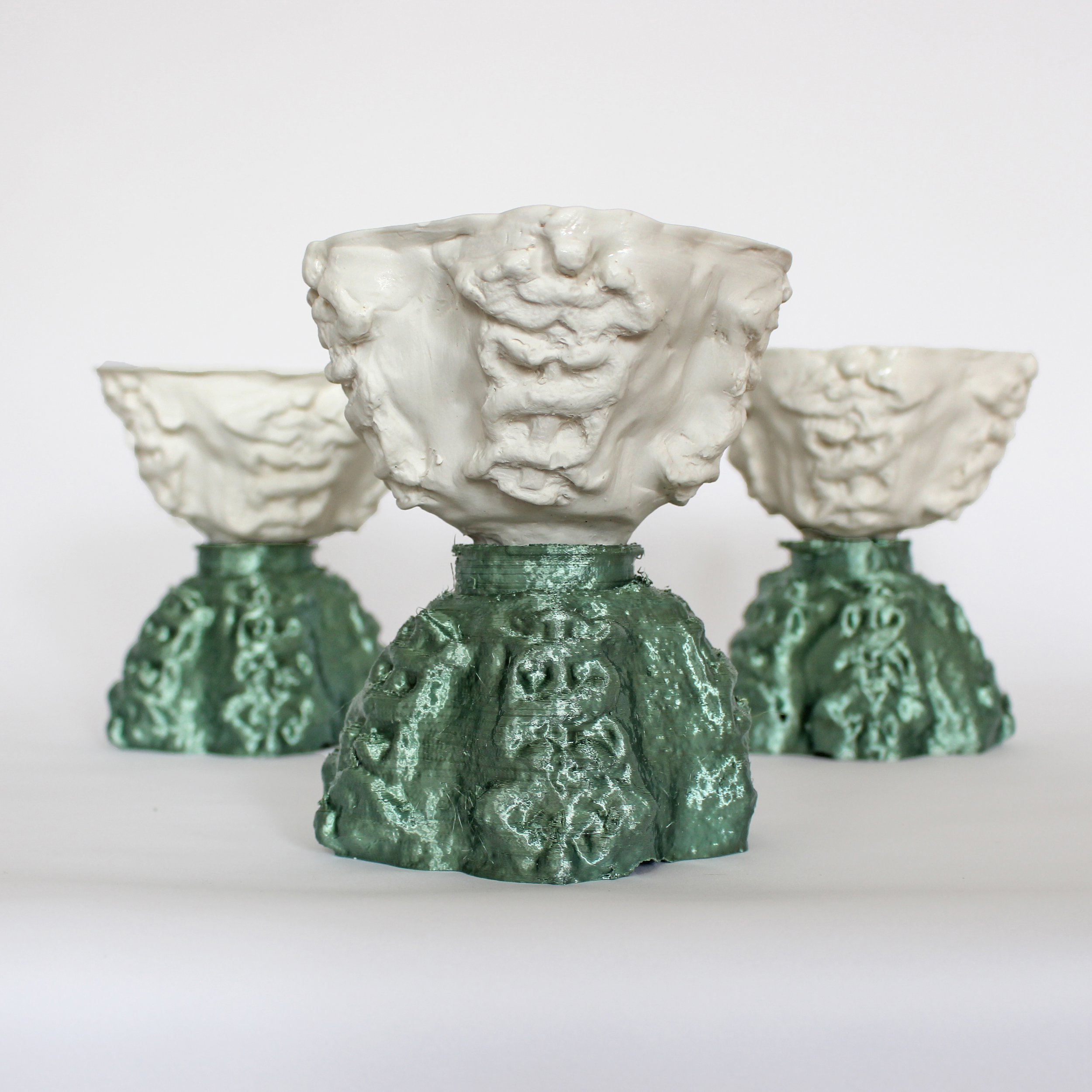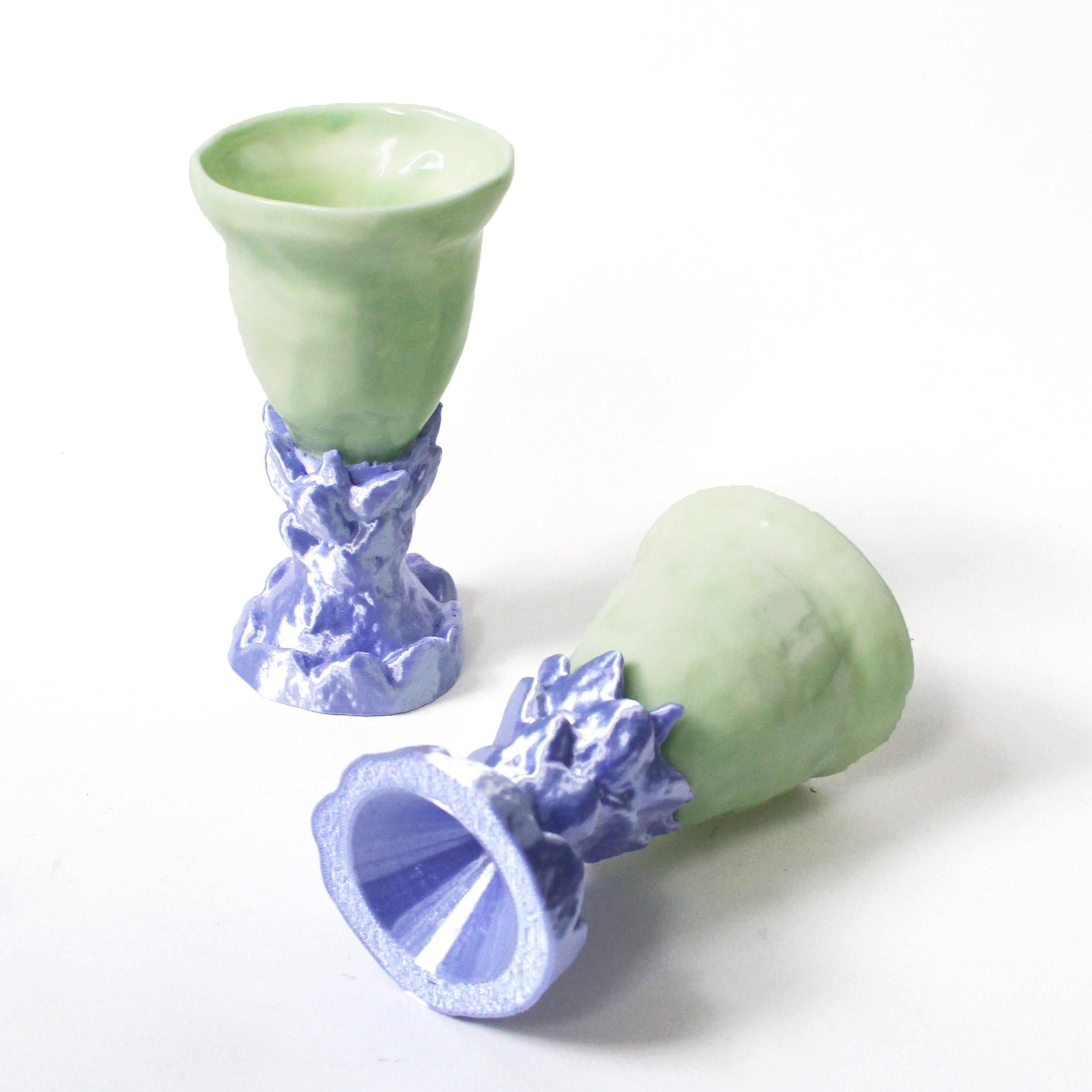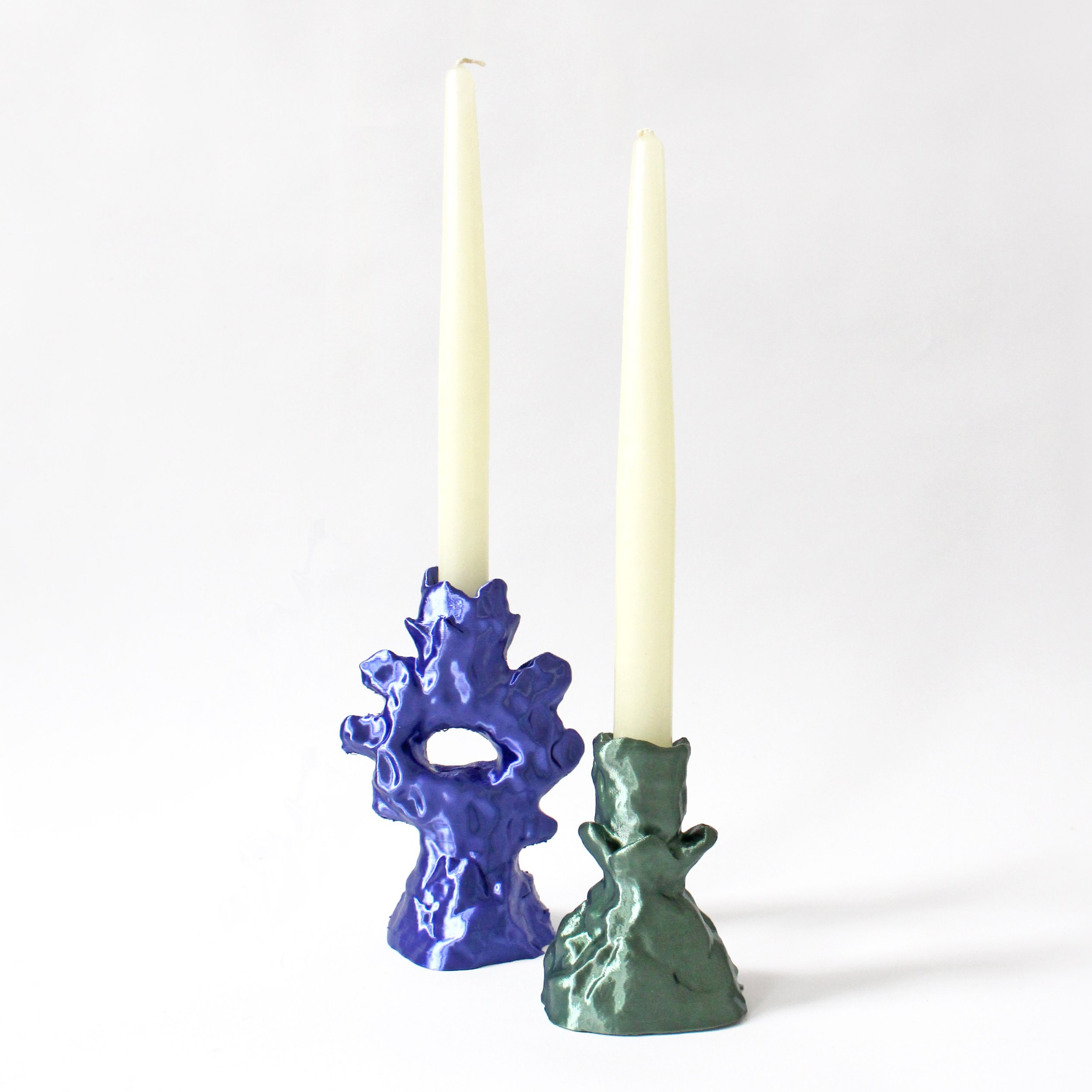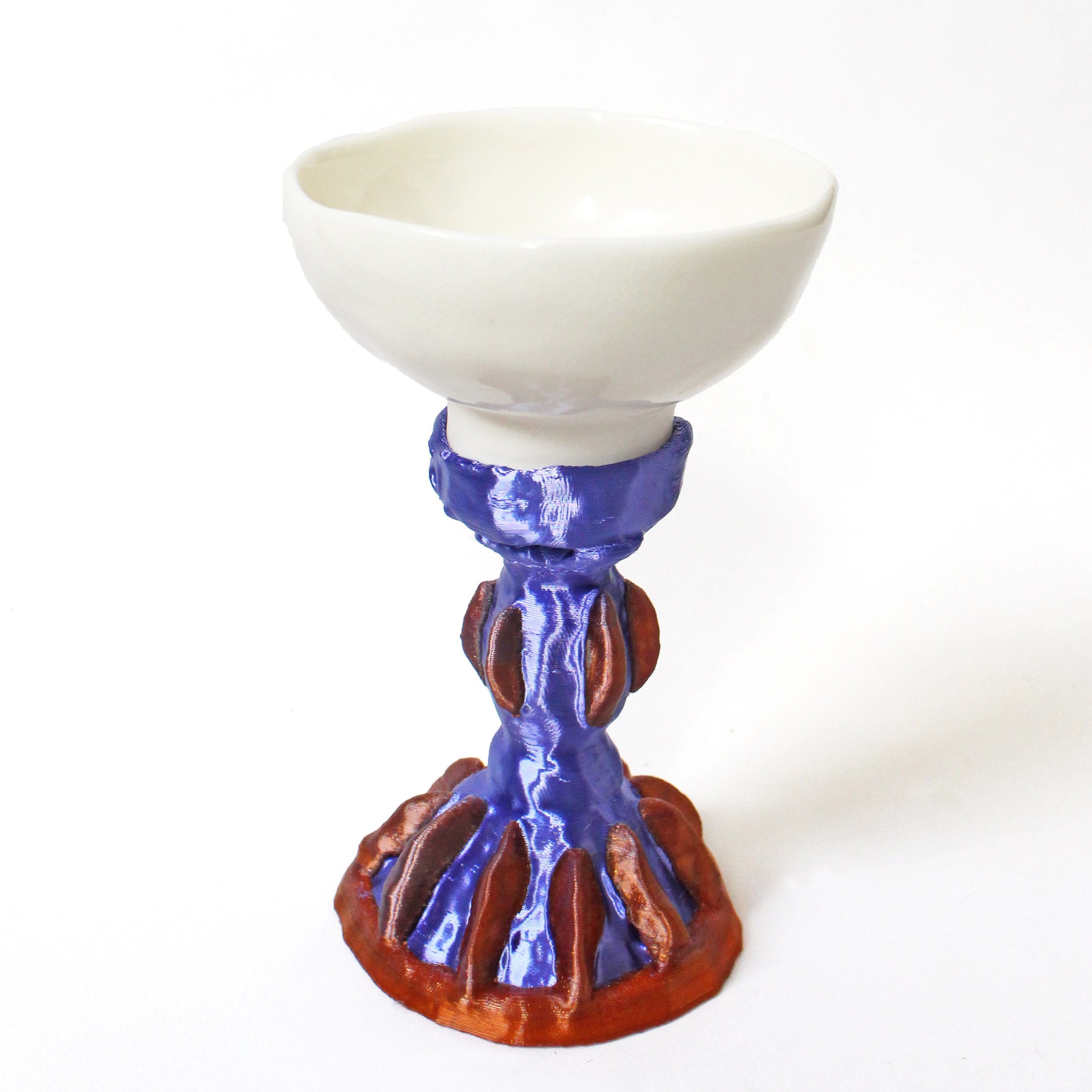Natalia Triantafylli
Interview - A new gaze on city heritage
Meet Natalia
Natalia Triantafylli is a Greek designer and maker based in London. She holds an MA from the Royal College of Art in Design Products (class of 2021), where she was awarded with a full scholarship from Burberry Design Foundation.
Through her project 'Chimeras of a High Tide', she questions the designer’s tendency to speculate on better futures and proposes instead a new gaze on our heritage. She achieves that through a very interesting process mixing 3D scan, printing and ceramics.
Natalia, what led you to mix ceramics with 3D printing ?
I started working with 3D printing during lockdown. During this period, I didn't have access to any workshops and all the museums were closed, so scanning and 3D printing were tools which I could experiment with easily from home. I also started paying more attention to the urban environment and engaging with London’s history through my long walks around the city. This is when I started developing a particular fascination for the ornate elements of Victorian mass-produced furniture: Egyptian sphinxes as bench handles and elaborate lamp poles which hark back to classicism. As a Greek person, I am used to living amongst the ruins of past grandeur, so I was intrigued by the paradox of the Victoriana, where the latest means of industrial production were expressed through revivalism. I also had a 3D printer in the house so I took the opportunity to engage with a new round of revivalism by passing the Victoriana through the sieve of rapid prototyping. When I eventually had access to ceramics facilities I started exploring the dialogue between my prints and clay. At first through mould making and then I started adding the 3D printed parts as an equal part of the synthesis.
What are the most important values or topics of exploration in your work as a designer ? What is your biggest source of inspiration ?
I would always get attached to ‘things’ and my practice very much embodies that attitude. Through my work, I investigate how attributions related to additional value can change through the prism of time and context. I draw inspiration from various encounters with objects: historical artifacts in museum, commodities arrayed in dollar shops, personal items of my immediate surroundings etc.
Objects have a great power to embody abstract notions about established human behaviours. Thus, I use them as ‘icons’ ready to be repurposed in order to create new ‘wholes’ of meaning.
How would you express the relationship between physical and digital in your work ?
When I was scanning the details of the urban environment I felt that the city was transformed into my pallet. At the same time, there is always a loss of information during the process of passing a form from digital to physical and vice versa. Through my objects I wish to celebrate this ‘degeneration’ and the importance of using randomness as a tool. In general I am working with digital mediums intuitively, almost in a hands-on way and the part of the process that I found most interesting is when I started to scan my own hand-built clay shapes and print them in 3D. There is something satisfying about making a machine spend 10 hours creating a print of a ‘naive’ form that took me a minute to shape out of clay.
Colours seem to have quite an importance in your creations. What is your relationship with them ?
I mainly approach colour as texture. My pallet is an archive of material explorations, from glaze tests, ready-made objects to ‘light plays’. I have to admit though that, like a magpie, I am really intrigued by shiny and iridescent hues. Anything that glitters has a visceral power to attract the gaze and for the same reason I feel that these ‘colours’ have been associated with bad taste and lack of sophistication. However, I insist on using them since I find them ironically honest. Also since my whole practice is kind of based on dichotomies I always enjoy employing contrasting textures in my work.
COLOUR PALETTE
READ MORE
Resilience
FUTURE TREND_
How to go back to primary ways without forgetting all what humanity has achieved technically and emotionally ?
April 2022
Chlorophyllia
FUTURE TREND_
In praise of plants. They are our past, our present but mainly our future.
December 2021





